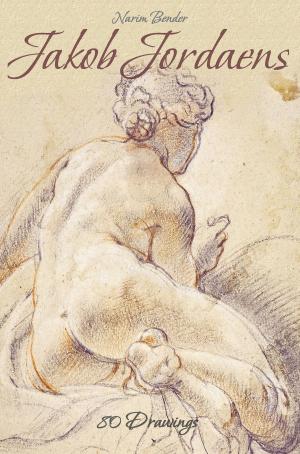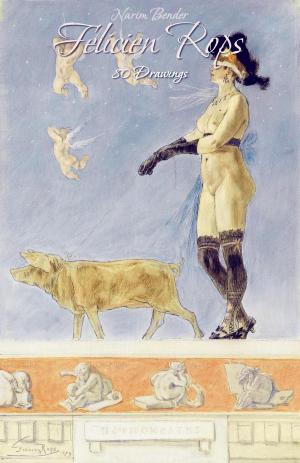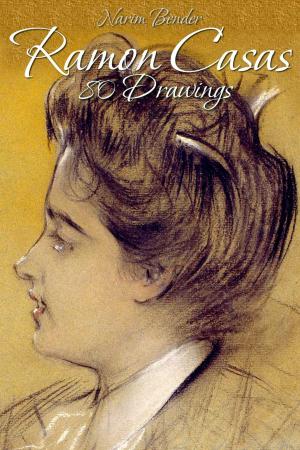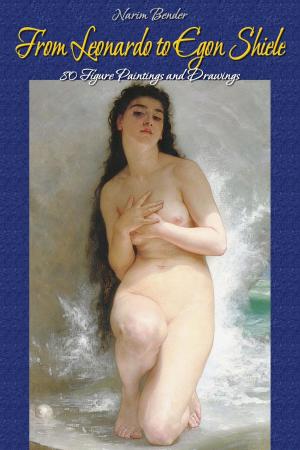Francois Boucher: Paintings (Colour Plates)
Nonfiction, Art & Architecture, Art History, European, General Art| Author: | Blagoy Kiroff | ISBN: | 9782765914877 |
| Publisher: | Osmora Inc. | Publication: | July 2, 2015 |
| Imprint: | Osmora Inc. | Language: | English |
| Author: | Blagoy Kiroff |
| ISBN: | 9782765914877 |
| Publisher: | Osmora Inc. |
| Publication: | July 2, 2015 |
| Imprint: | Osmora Inc. |
| Language: | English |
François Boucher (1703 – 1770) was a French painter, a proponent of Rococo taste, known for his idyllic and voluptuous paintings on classical themes, decorative allegories representing the arts or pastoral occupations, intended as a sort of two-dimensional furniture. He was perhaps the most celebrated decorative artist of the 18th century. He also painted several portraits of his illustrious patroness, Madame de Pompadour.
He was born in Paris, the son of a lace designer Nicolas Boucher, who gave him his first artistic training. A painting Boucher exhibited at the age of 17 was admired by the painter François Lemoyne, whose apprentice Boucher became, but after only three months he went to work for the engraver Jean-François Cars. In 1723, Boucher won the elite Grand Prix de Rome, although he did not take up the consequential opportunity to study in Italy until five years later, due to financial problems at the Academie Royale. On his return from studying in Italy in 1731, he was admitted to the Académie de peinture et de sculpture as a historical painter, and became a faculty member in 1734. His career accelerated from this point, as he advanced from professor to Rector of the Academy, becoming head of the Royal Gobelins Manufactory in 1755 and finally First Painter of the King in 1765.
Reflecting inspiration gained from the artists Watteau and Rubens, Boucher's early work celebrates the idyllic and tranquil, portraying nature and landscape. However, his art typically forgoes traditional rural innocence to portray scenes with a definitive style of eroticism, and his mythological scenes are passionate and intimately amorous rather than traditionally epic. Marquise de Pompadour (mistress of King Louis XV), whose name became synonymous with Rococo art, was a great fan of Boucher's, and had the painter under her protection: it is particularly in his portraits of her that this style is clearly exemplified.
Paintings such as The Breakfast of 1739, a family scene, also show Boucher as a master of the genre scene, as he regularly used his own wife and family as models. These intimate family scenes are, however, in contrast to the 'licentious' style, as seen in his Odalisque portraits. Boucher gained lasting notoriety through such private commissions for wealthy collectors and, after the ever-moral Diderot expressed his disapproval, his reputation came under increasing critical attack during the last of his creative years.
Along with his painting, Boucher also designed theatre costumes and sets, closely parallel his own style of painting. Tapestry design was also a concern. For the Beauvais tapestry workshops he first designed a series of "Italian festivals" in 1736, which proved to be very successful and often rewoven over the years, and then, commissioned in 1737, a suite of the story of Cupid and Psyche. During two decades' involvement with the Beauvais tapestry workshops Boucher produced designs for six series of hangings in all. Only his appointment in 1755 as director of the rival Gobelins terminated the association. He was also called upon for designs for court festivities organized by that section of the King's household called the Menus-Plaisirs du Roi and for the opera and for royal châteaux Versailles, Fontainebleau and Choisy. His designs for all of the aforementioned augmented his earlier reputation, resulting in many engravings from his work and even reproduction of his designs on porcelain and biscuit-ware at the Vincennes and Sèvres factories.
Francois Boucher died on 30 May 1770 in Paris. His name, along with that of his patron Madame de Pompadour, had become synonymous with the French Rococo style.
François Boucher (1703 – 1770) was a French painter, a proponent of Rococo taste, known for his idyllic and voluptuous paintings on classical themes, decorative allegories representing the arts or pastoral occupations, intended as a sort of two-dimensional furniture. He was perhaps the most celebrated decorative artist of the 18th century. He also painted several portraits of his illustrious patroness, Madame de Pompadour.
He was born in Paris, the son of a lace designer Nicolas Boucher, who gave him his first artistic training. A painting Boucher exhibited at the age of 17 was admired by the painter François Lemoyne, whose apprentice Boucher became, but after only three months he went to work for the engraver Jean-François Cars. In 1723, Boucher won the elite Grand Prix de Rome, although he did not take up the consequential opportunity to study in Italy until five years later, due to financial problems at the Academie Royale. On his return from studying in Italy in 1731, he was admitted to the Académie de peinture et de sculpture as a historical painter, and became a faculty member in 1734. His career accelerated from this point, as he advanced from professor to Rector of the Academy, becoming head of the Royal Gobelins Manufactory in 1755 and finally First Painter of the King in 1765.
Reflecting inspiration gained from the artists Watteau and Rubens, Boucher's early work celebrates the idyllic and tranquil, portraying nature and landscape. However, his art typically forgoes traditional rural innocence to portray scenes with a definitive style of eroticism, and his mythological scenes are passionate and intimately amorous rather than traditionally epic. Marquise de Pompadour (mistress of King Louis XV), whose name became synonymous with Rococo art, was a great fan of Boucher's, and had the painter under her protection: it is particularly in his portraits of her that this style is clearly exemplified.
Paintings such as The Breakfast of 1739, a family scene, also show Boucher as a master of the genre scene, as he regularly used his own wife and family as models. These intimate family scenes are, however, in contrast to the 'licentious' style, as seen in his Odalisque portraits. Boucher gained lasting notoriety through such private commissions for wealthy collectors and, after the ever-moral Diderot expressed his disapproval, his reputation came under increasing critical attack during the last of his creative years.
Along with his painting, Boucher also designed theatre costumes and sets, closely parallel his own style of painting. Tapestry design was also a concern. For the Beauvais tapestry workshops he first designed a series of "Italian festivals" in 1736, which proved to be very successful and often rewoven over the years, and then, commissioned in 1737, a suite of the story of Cupid and Psyche. During two decades' involvement with the Beauvais tapestry workshops Boucher produced designs for six series of hangings in all. Only his appointment in 1755 as director of the rival Gobelins terminated the association. He was also called upon for designs for court festivities organized by that section of the King's household called the Menus-Plaisirs du Roi and for the opera and for royal châteaux Versailles, Fontainebleau and Choisy. His designs for all of the aforementioned augmented his earlier reputation, resulting in many engravings from his work and even reproduction of his designs on porcelain and biscuit-ware at the Vincennes and Sèvres factories.
Francois Boucher died on 30 May 1770 in Paris. His name, along with that of his patron Madame de Pompadour, had become synonymous with the French Rococo style.















